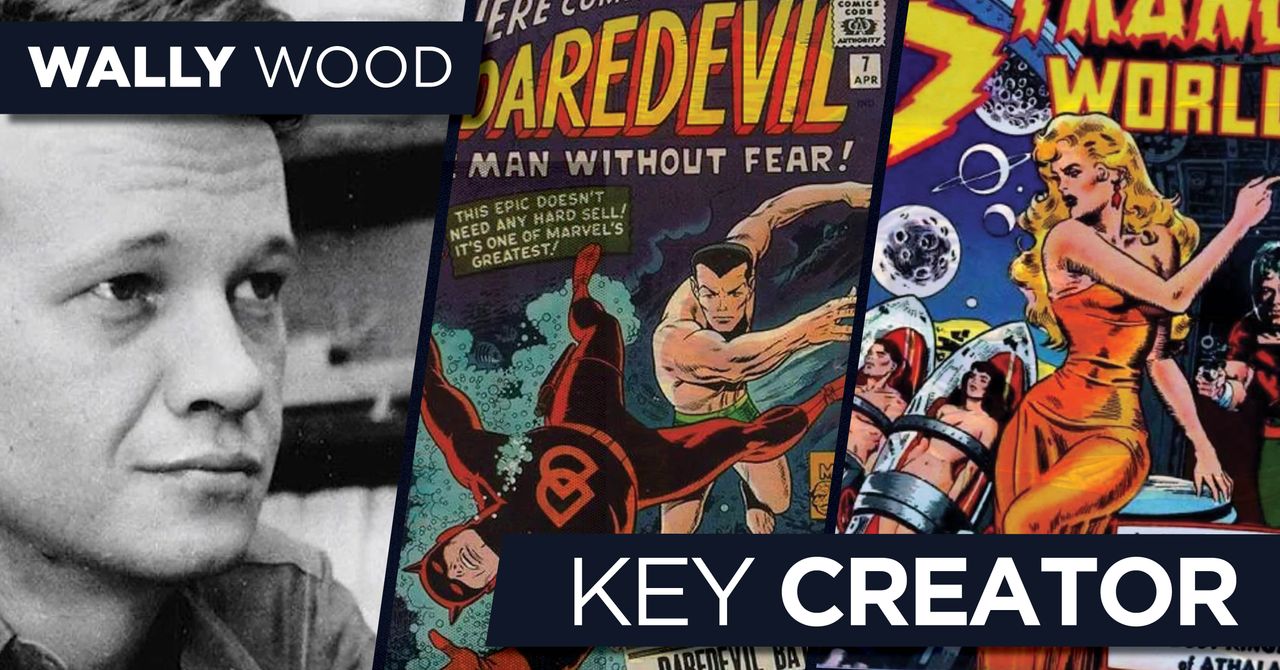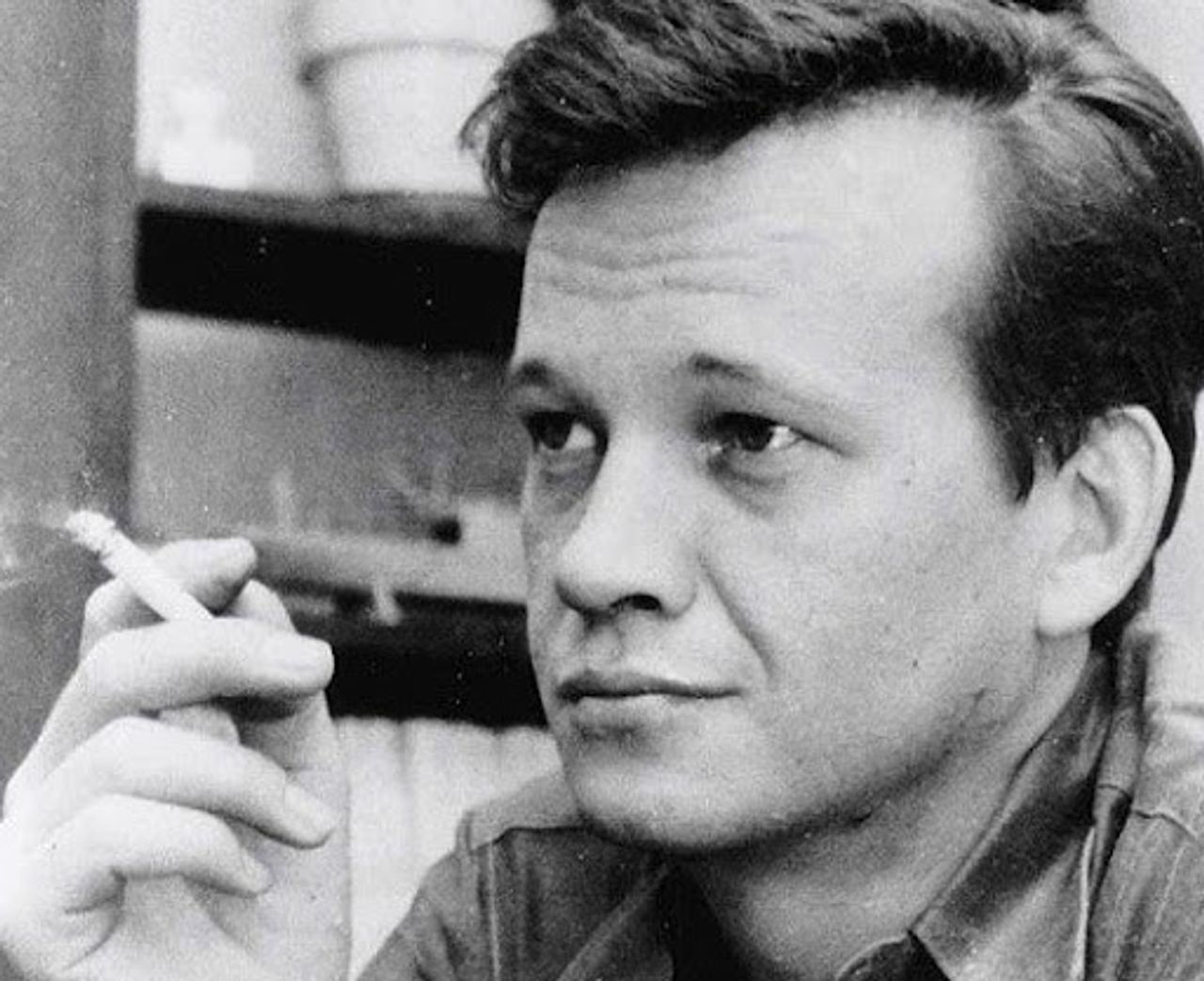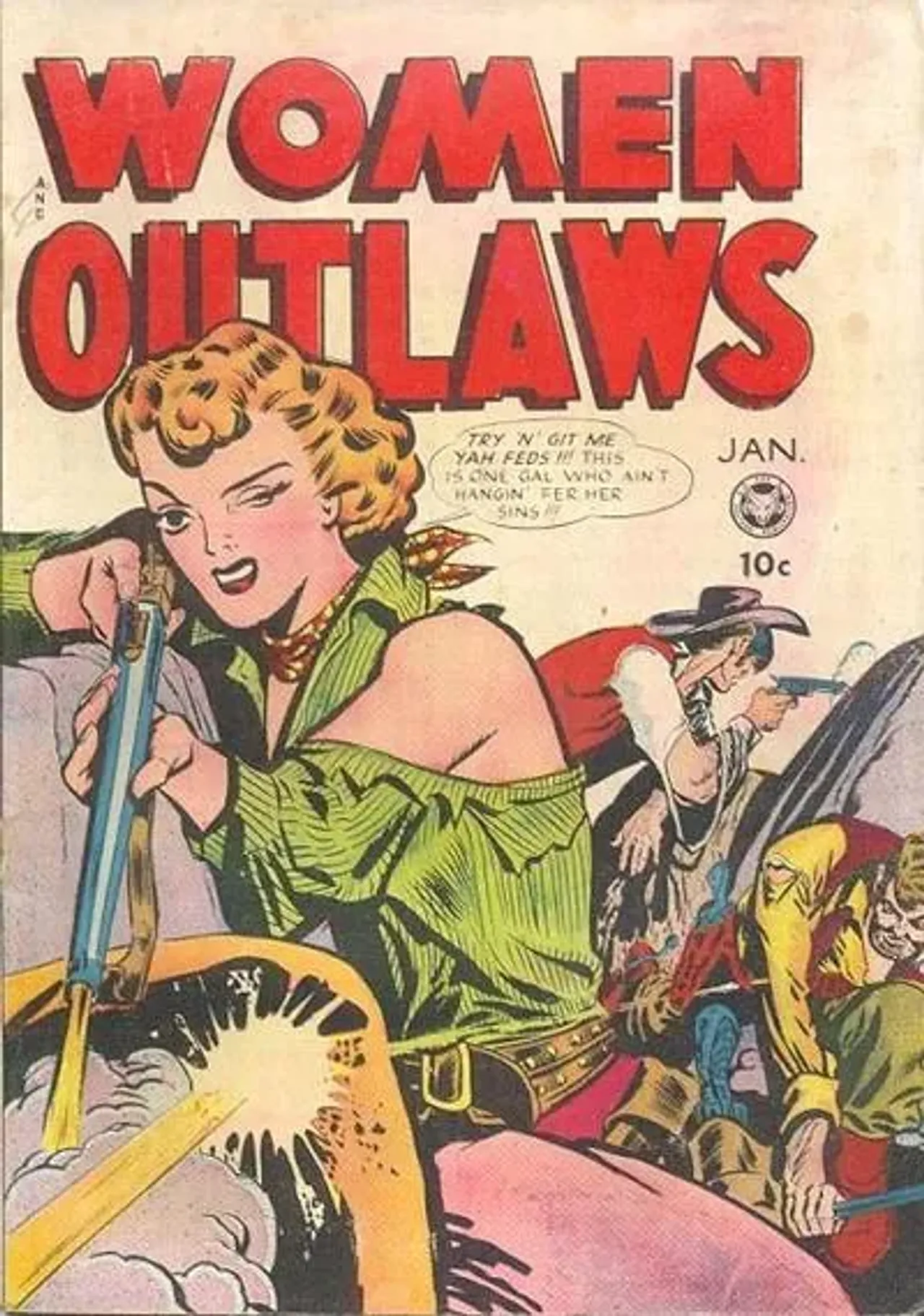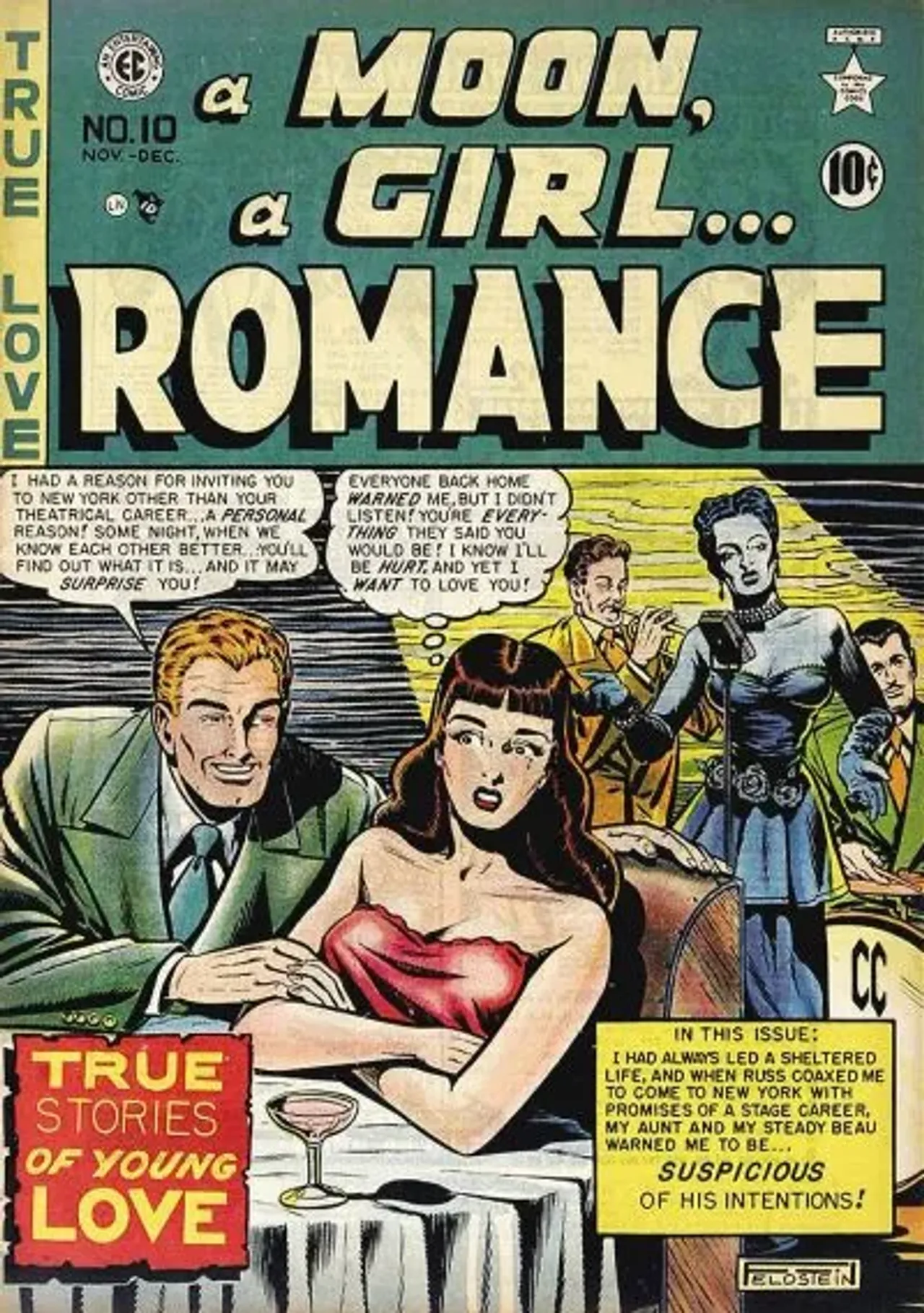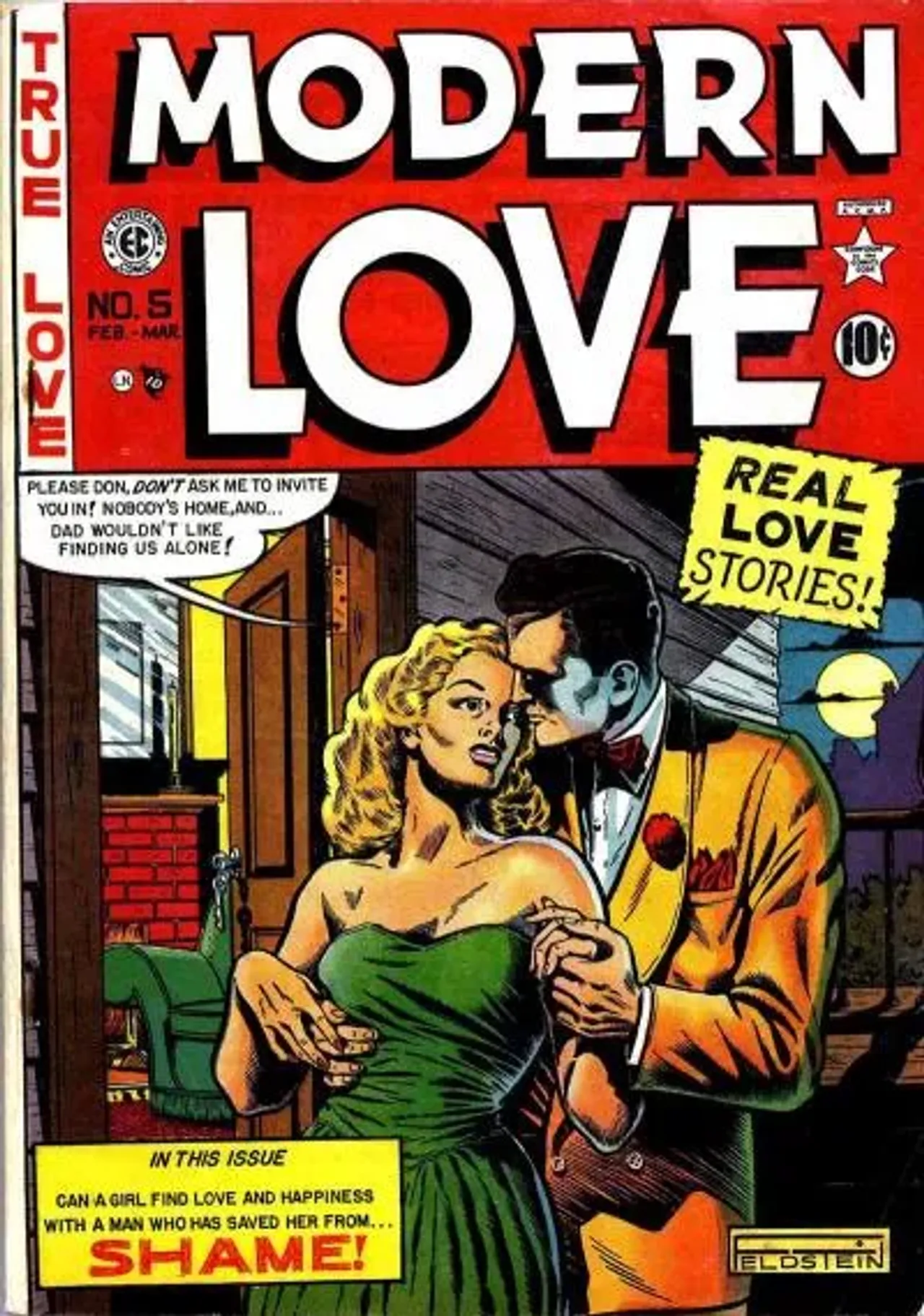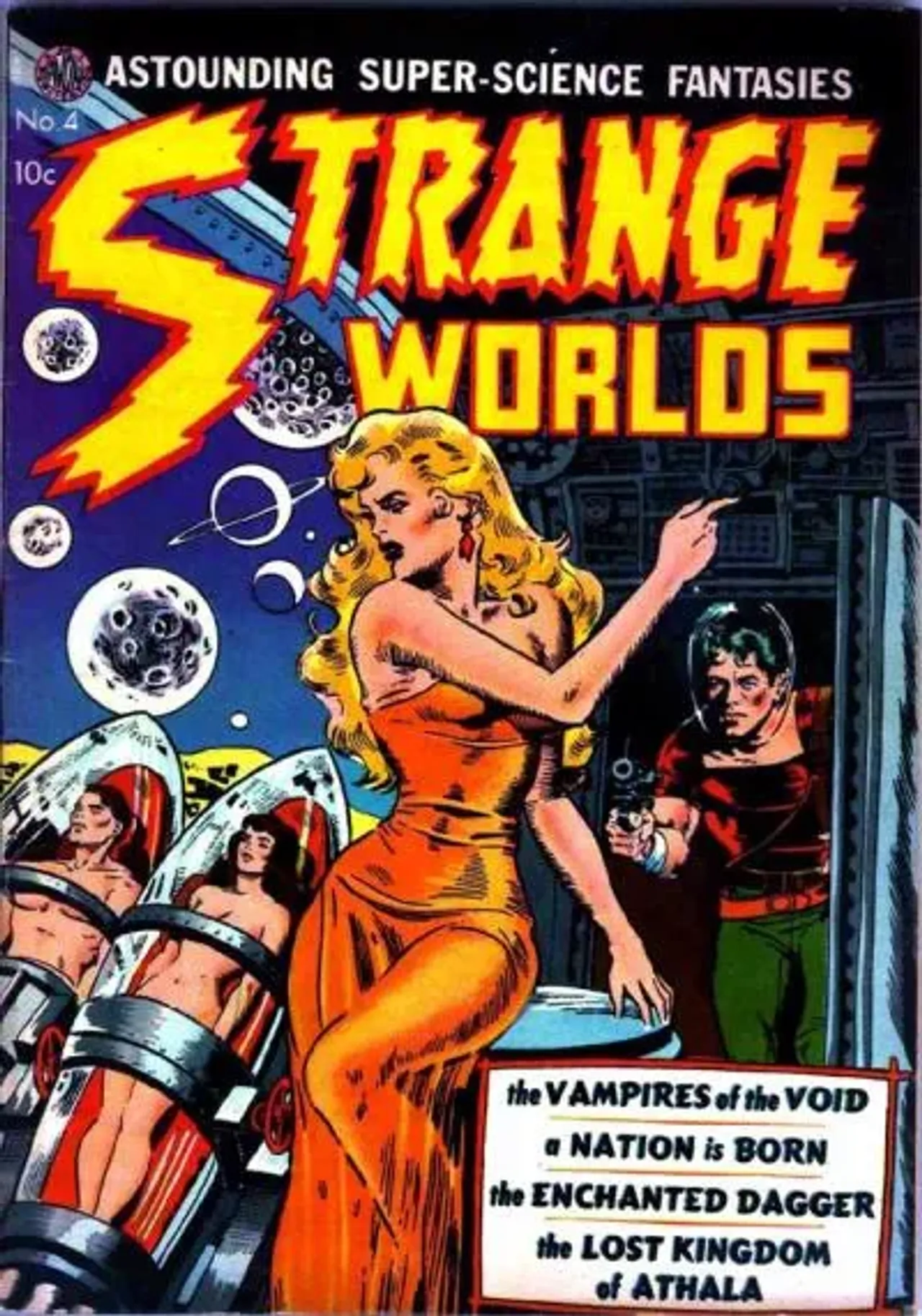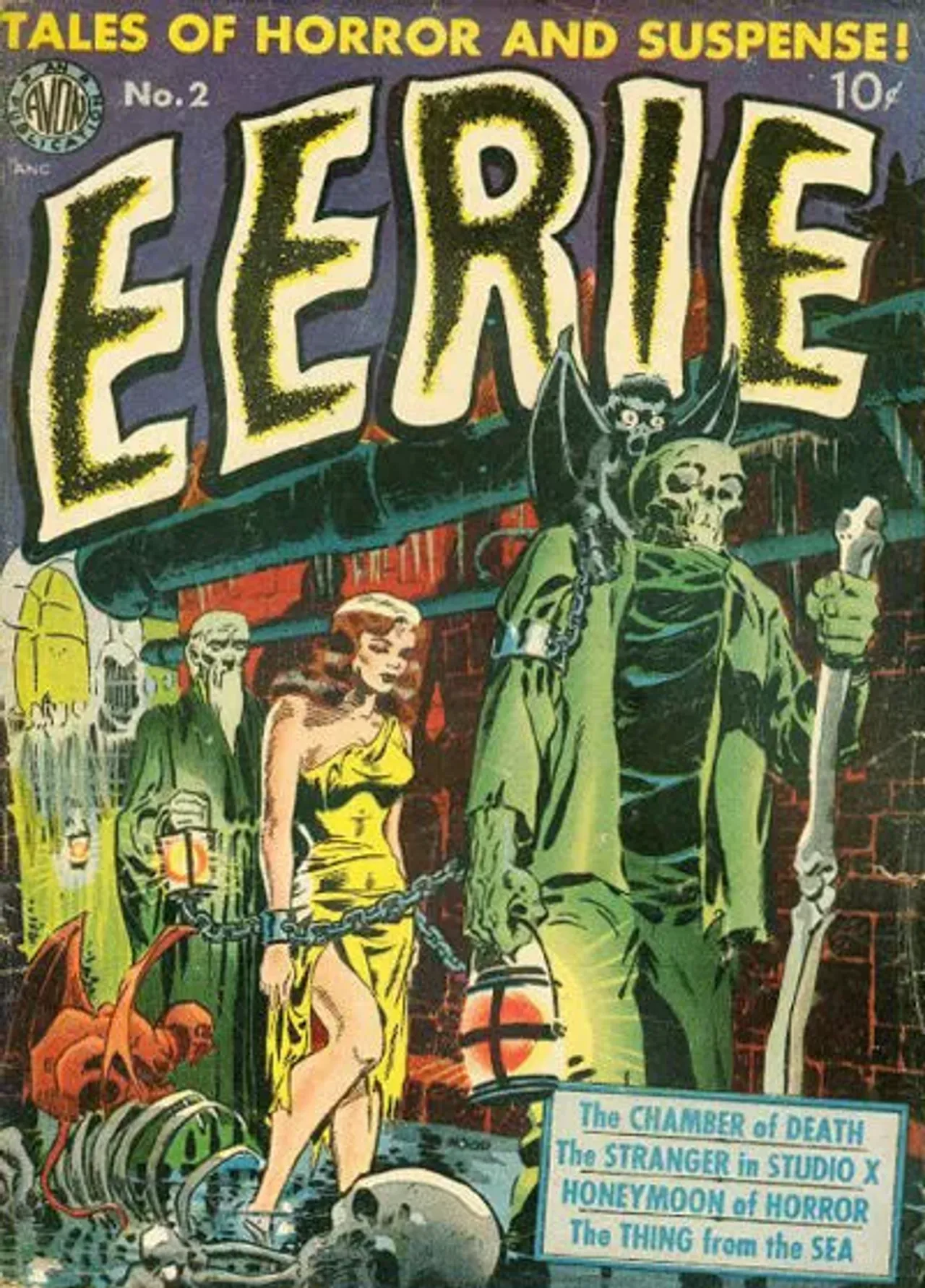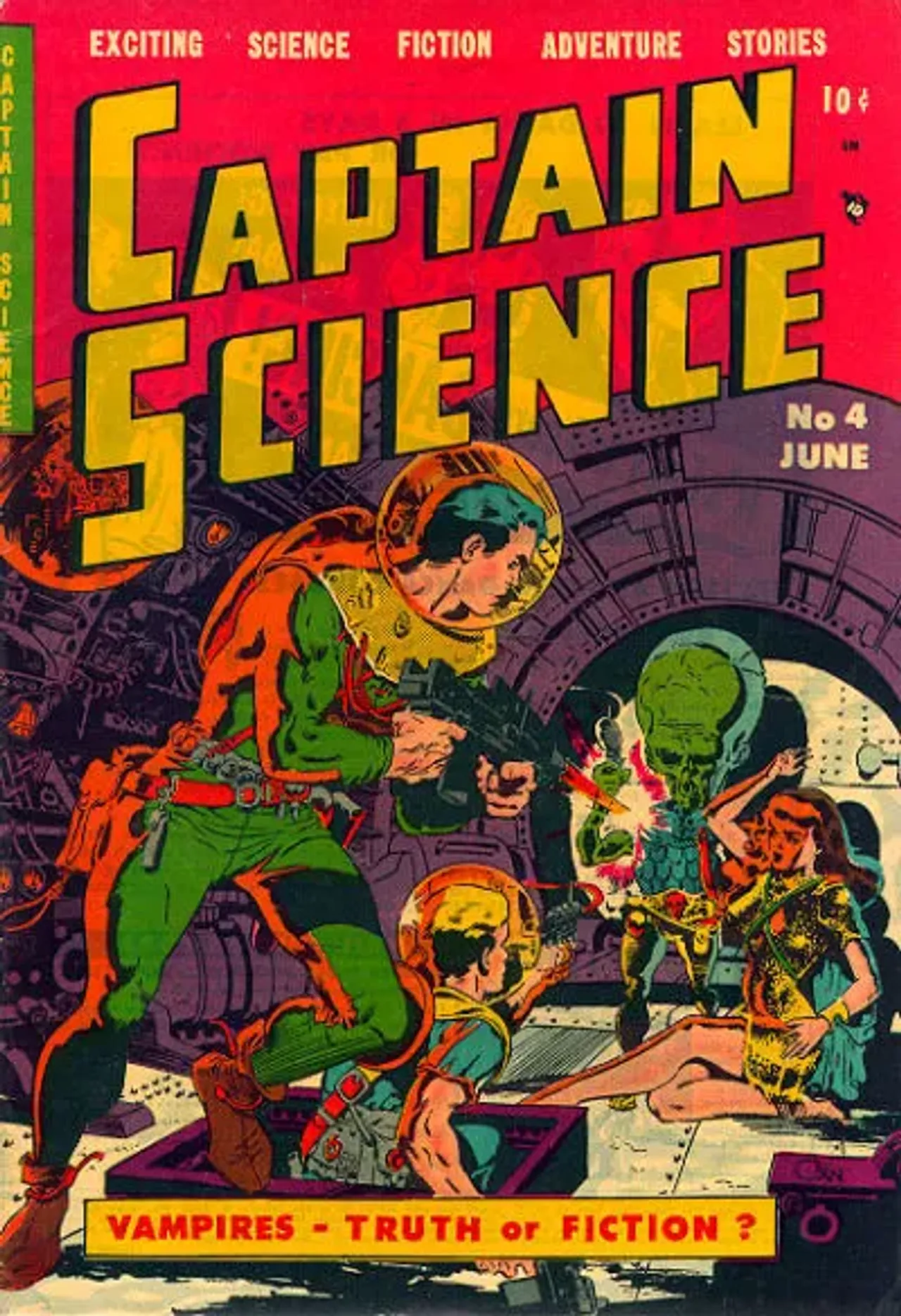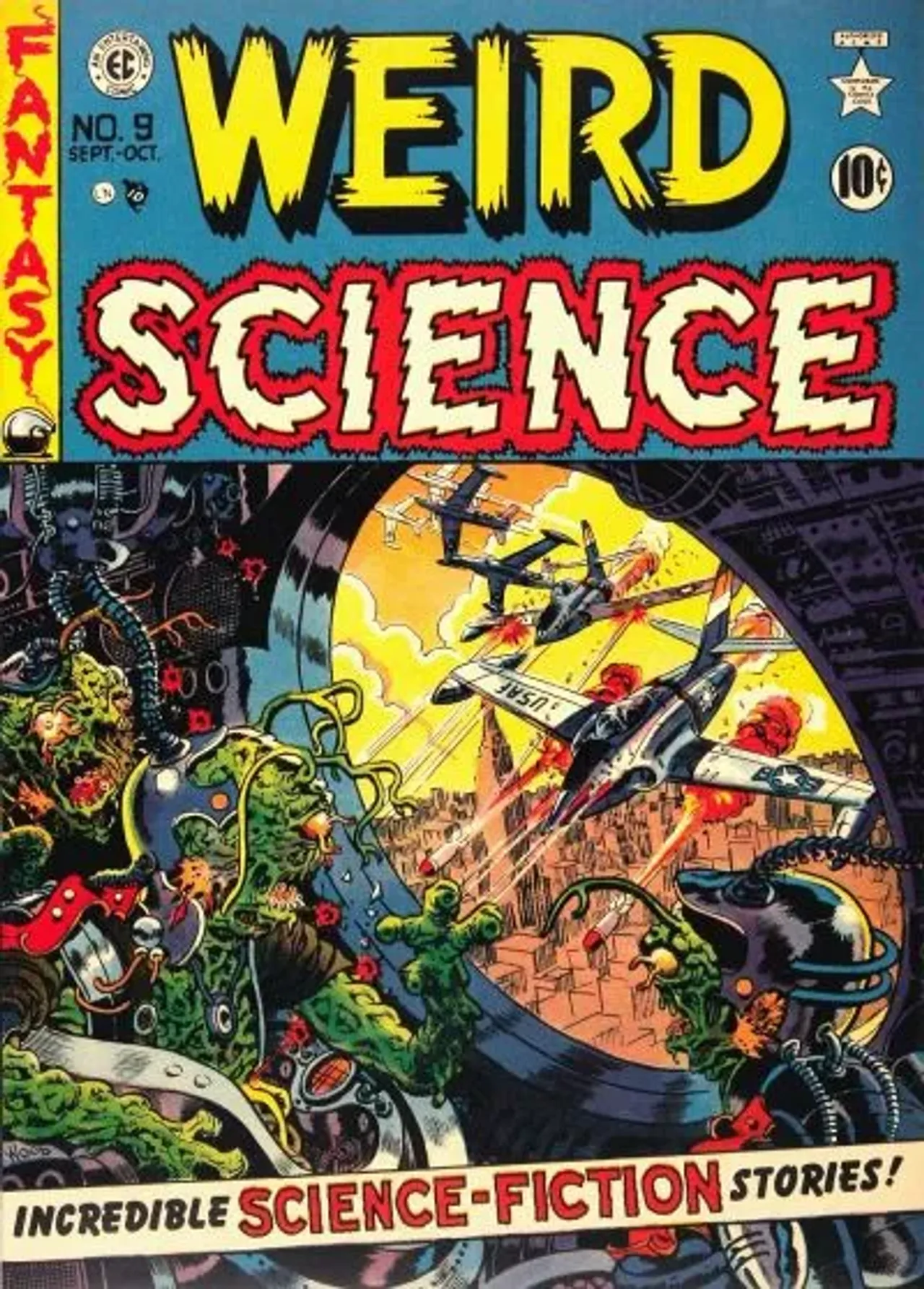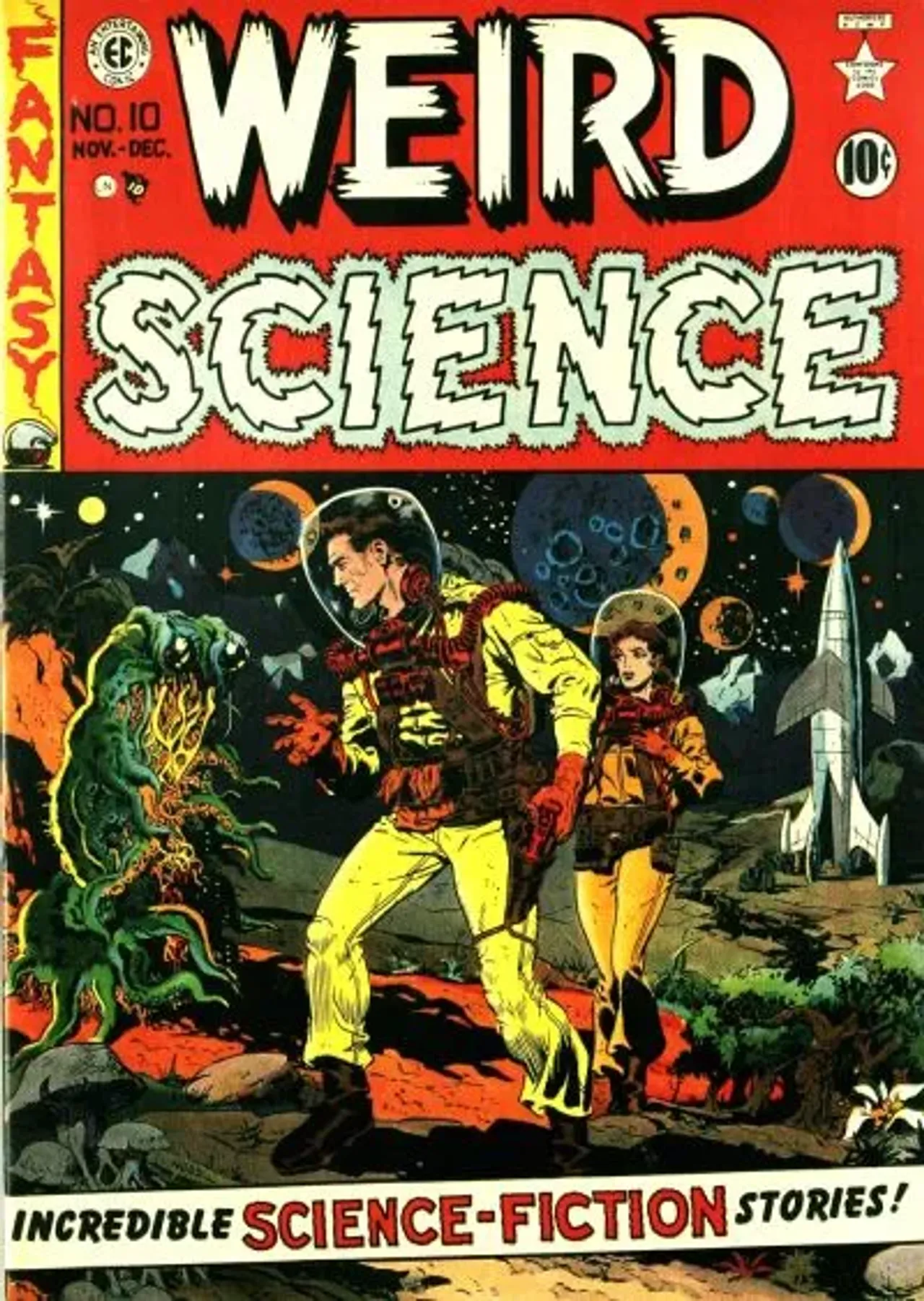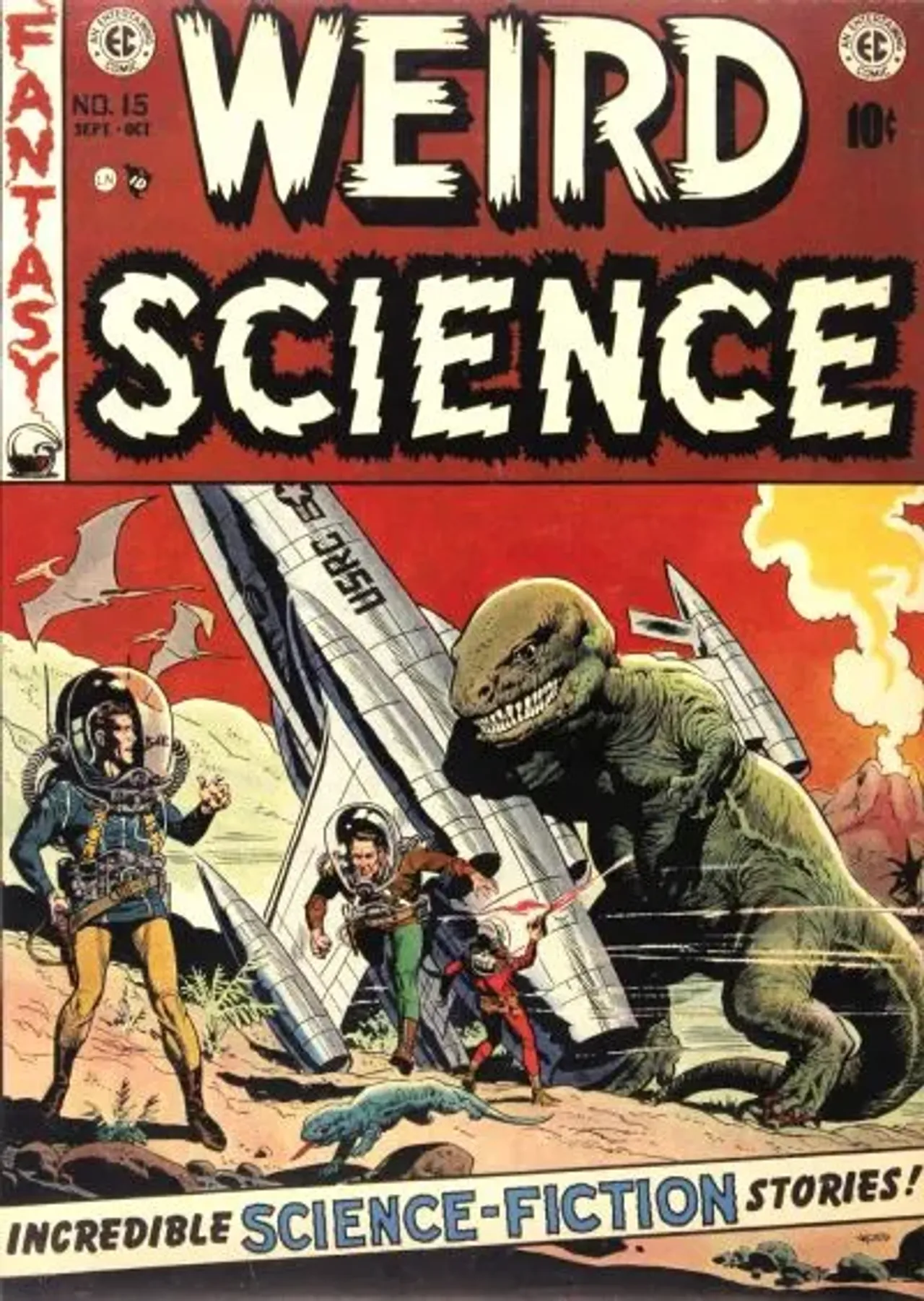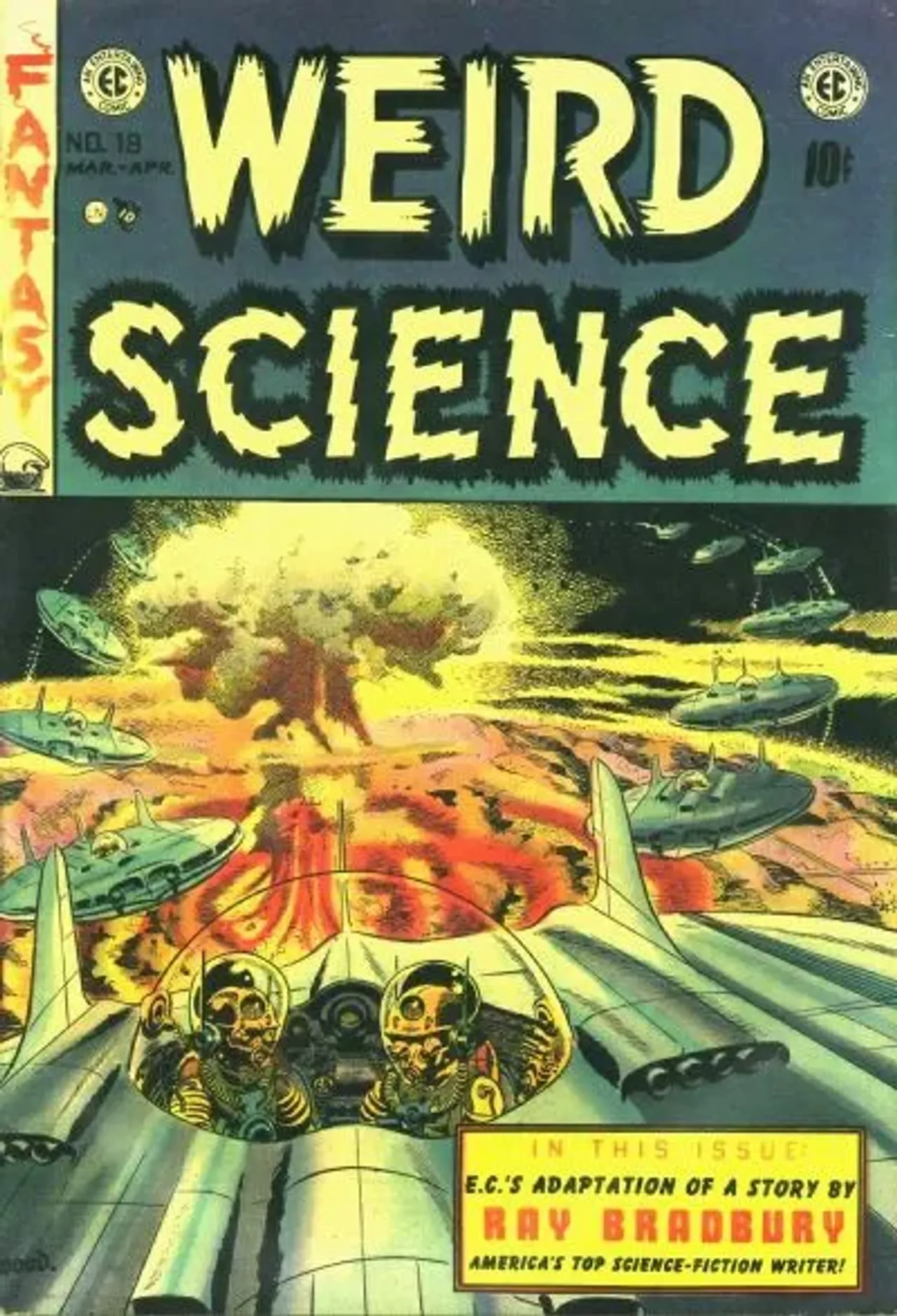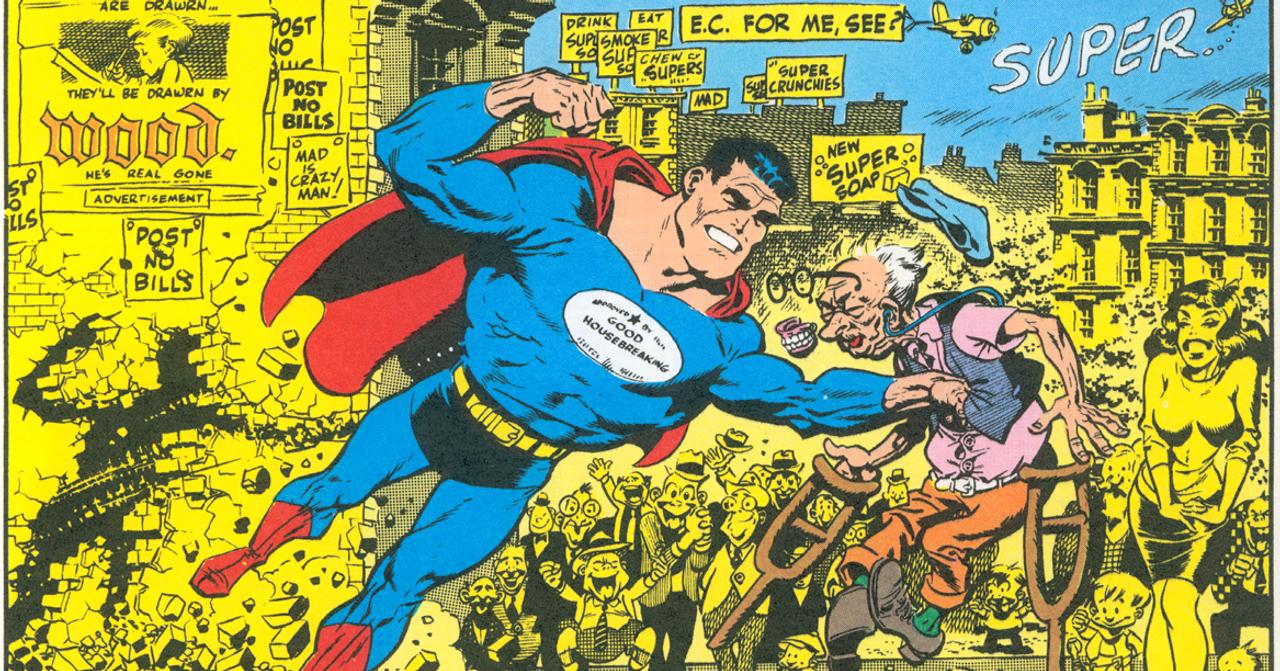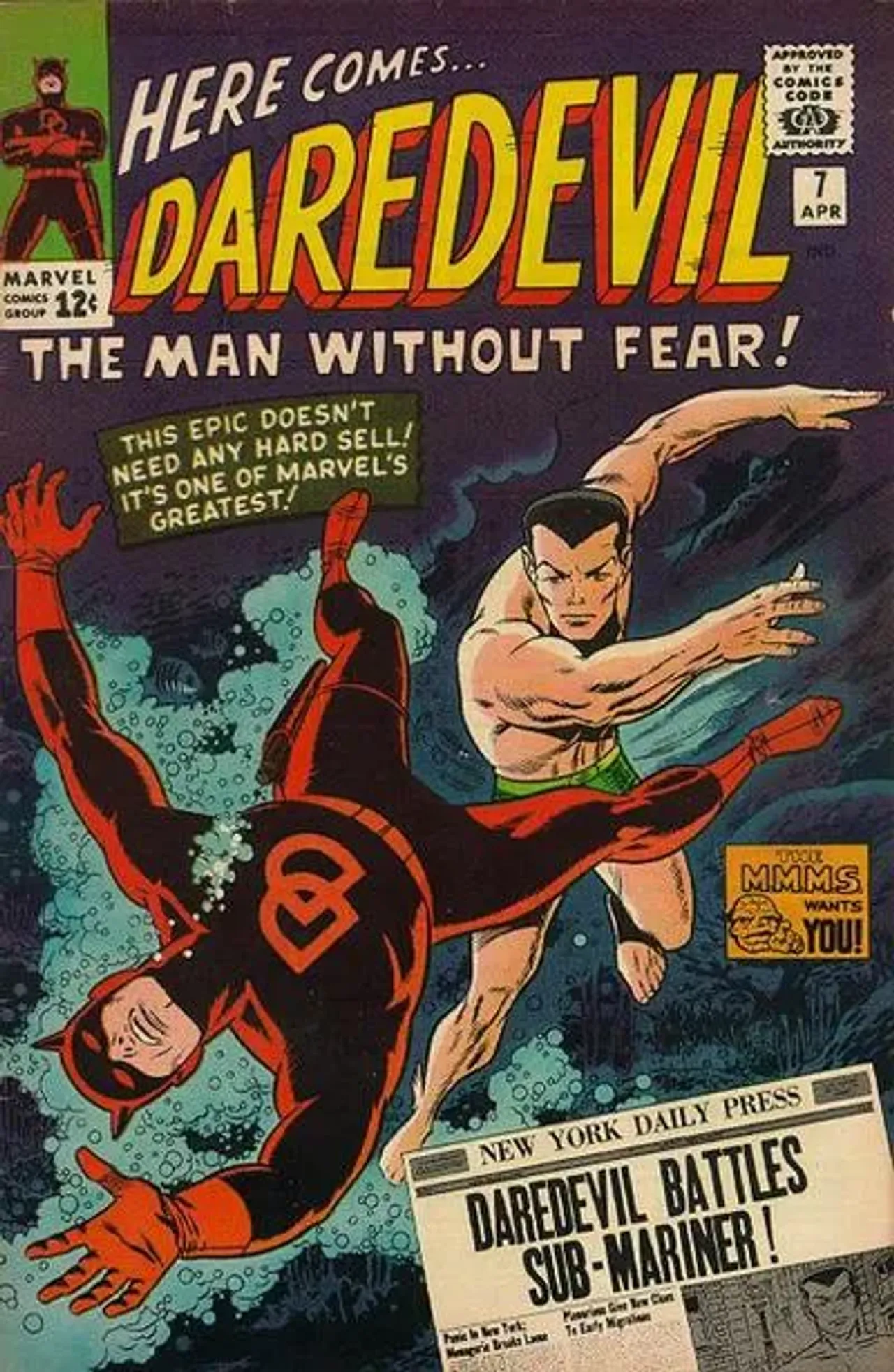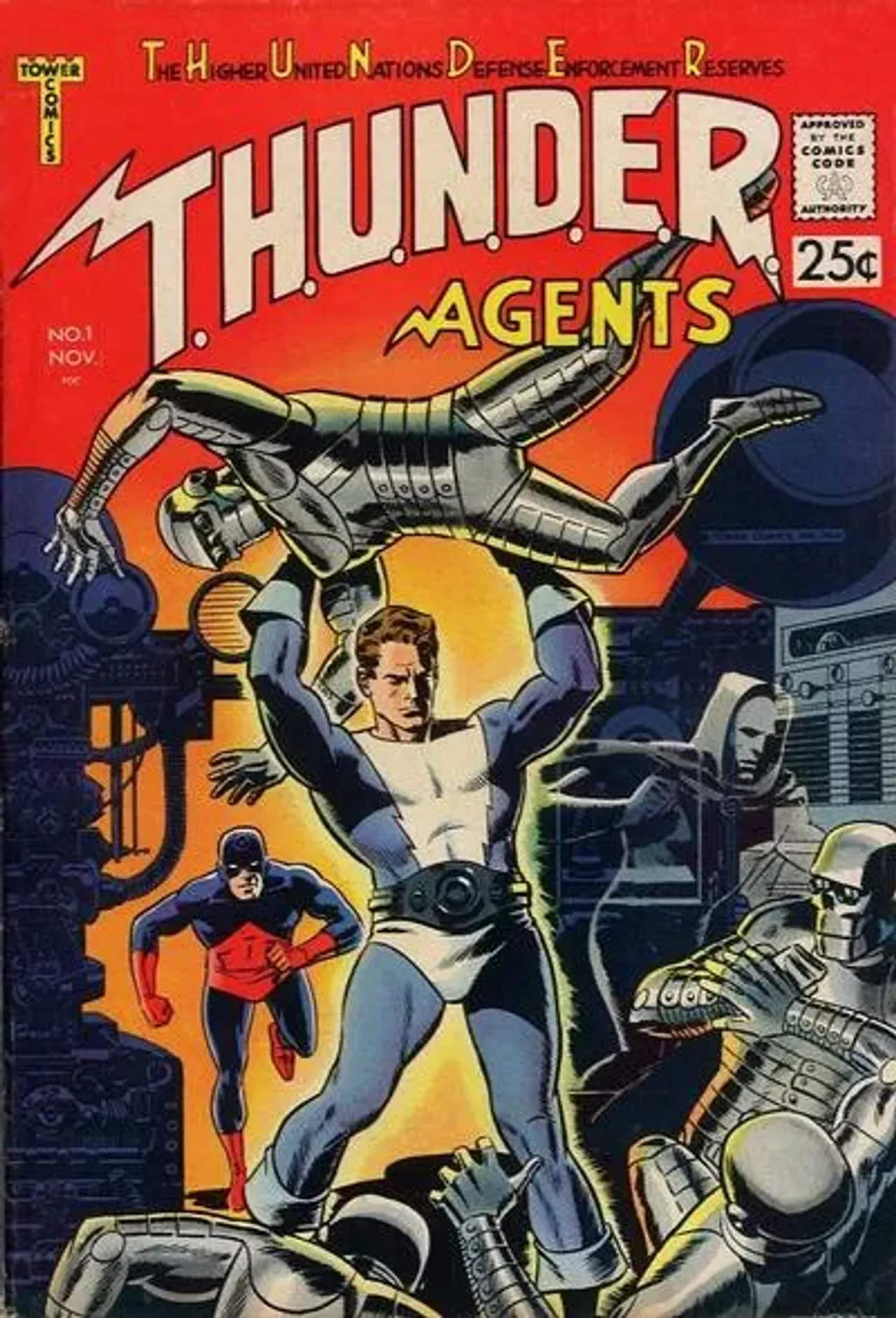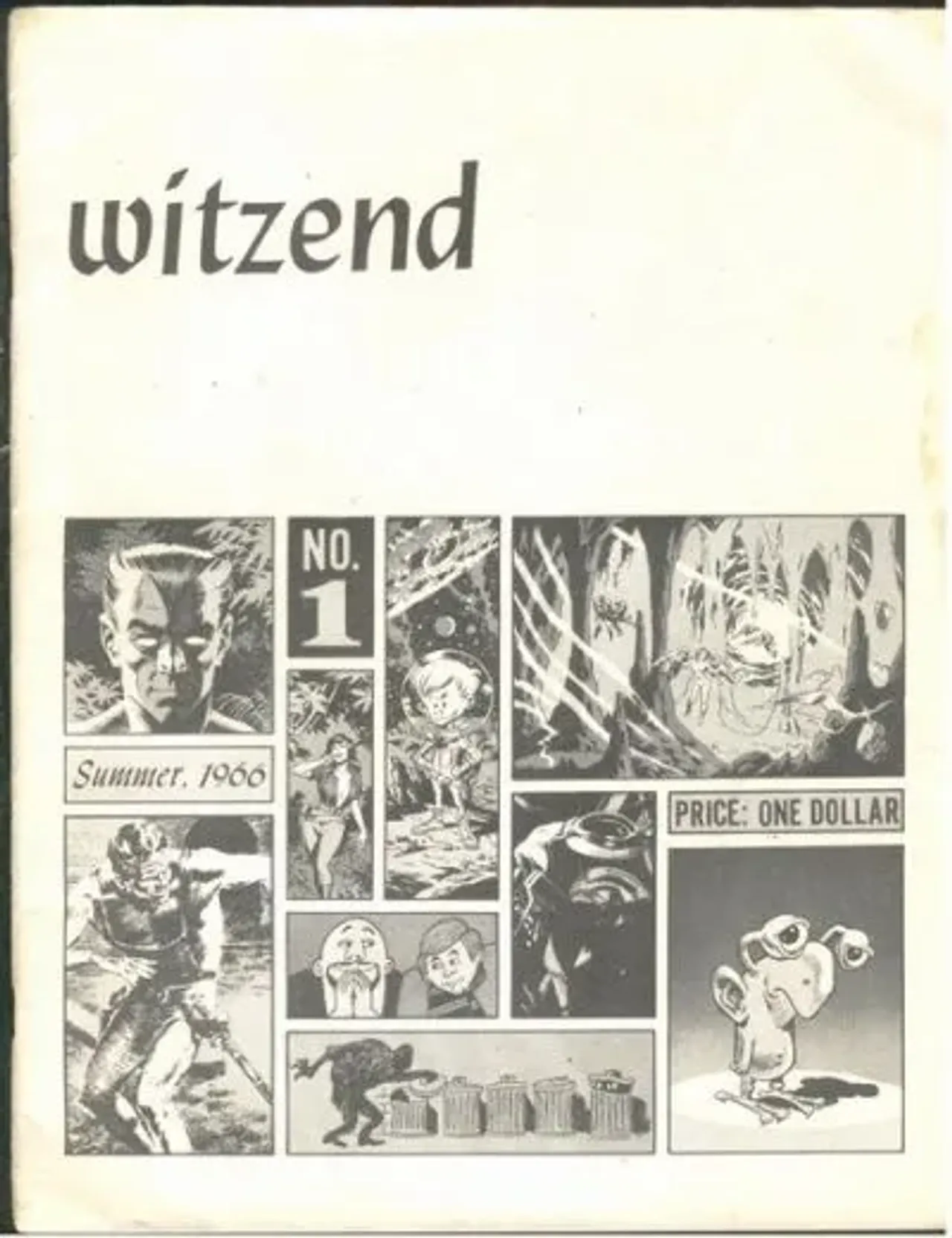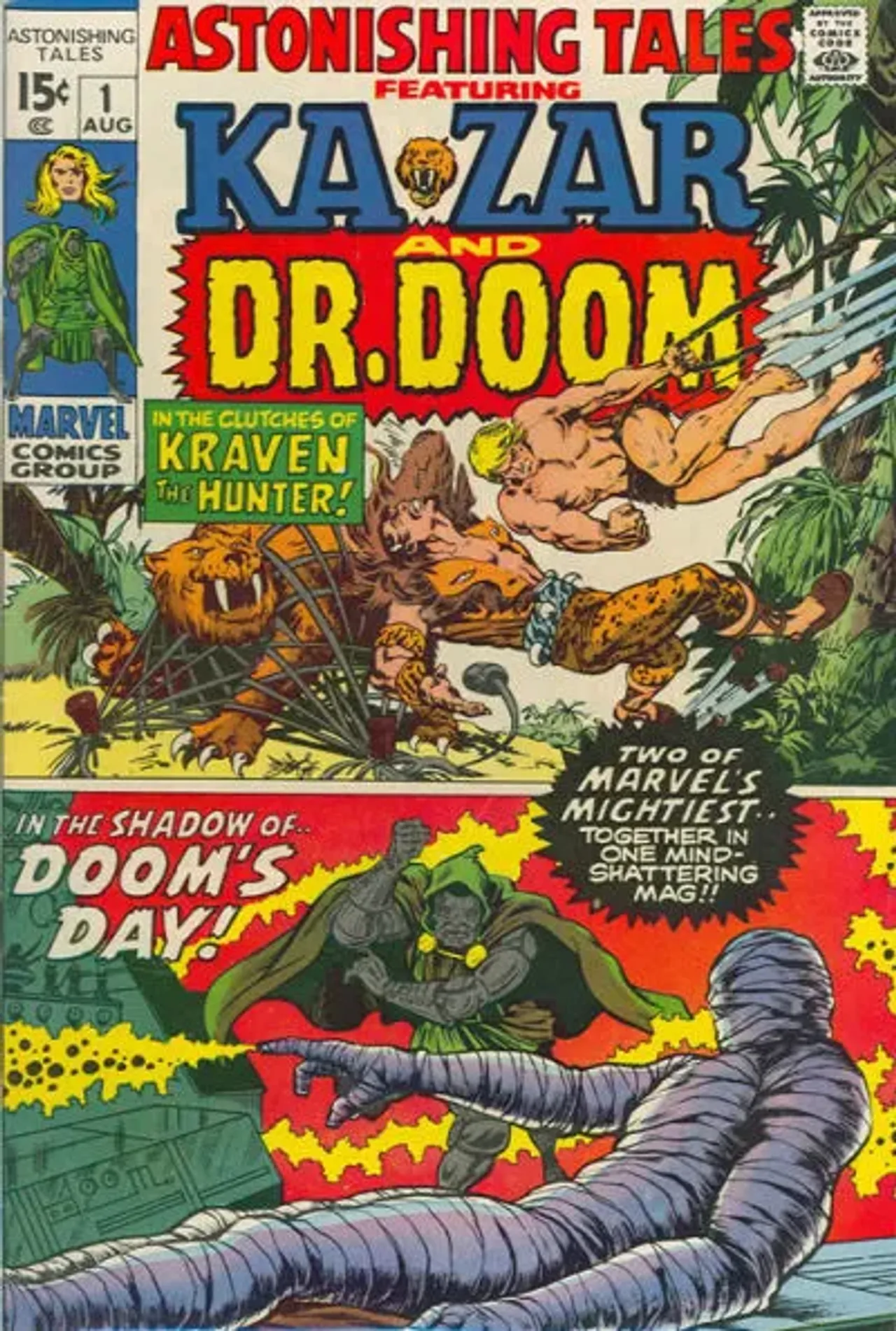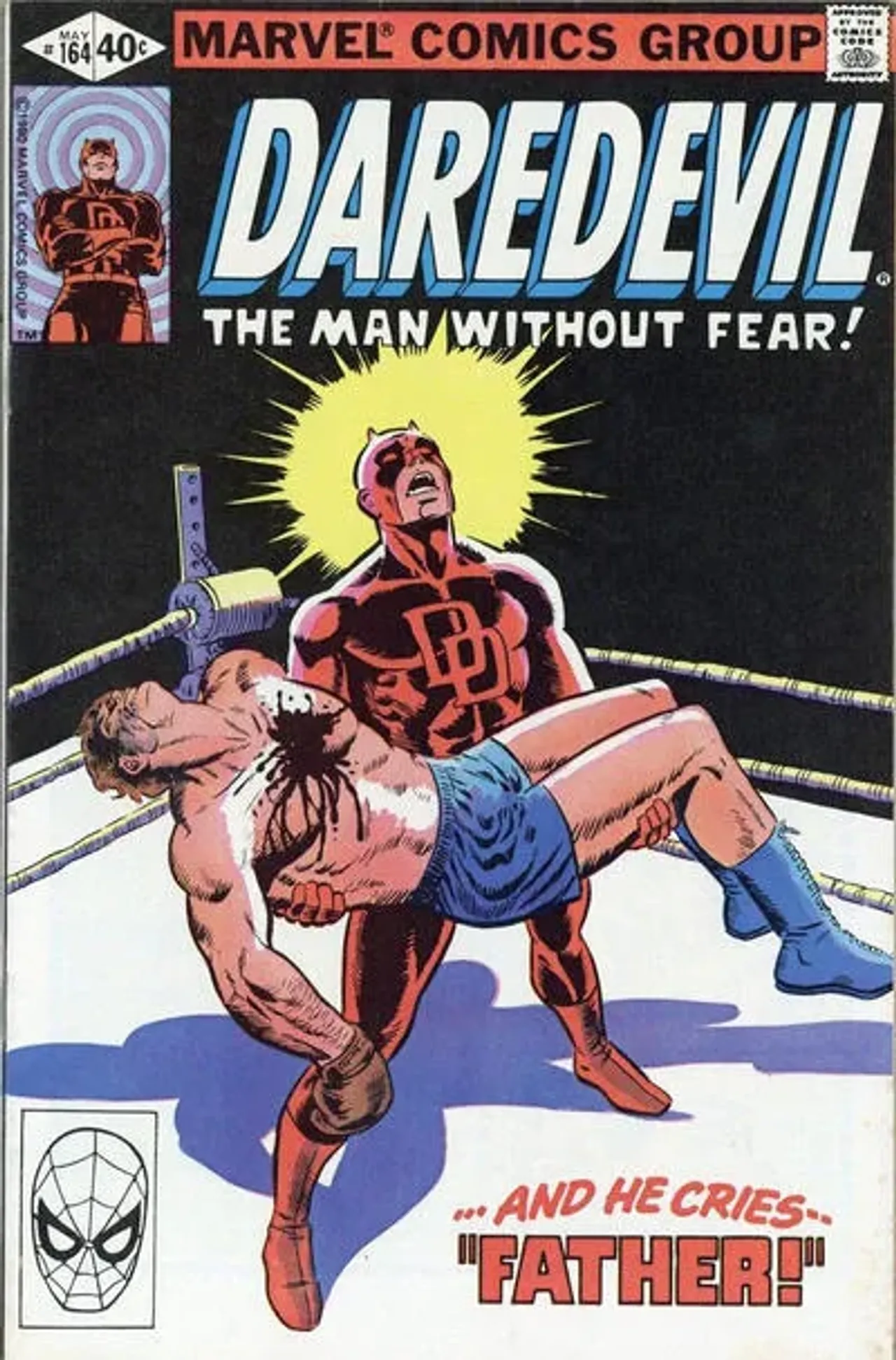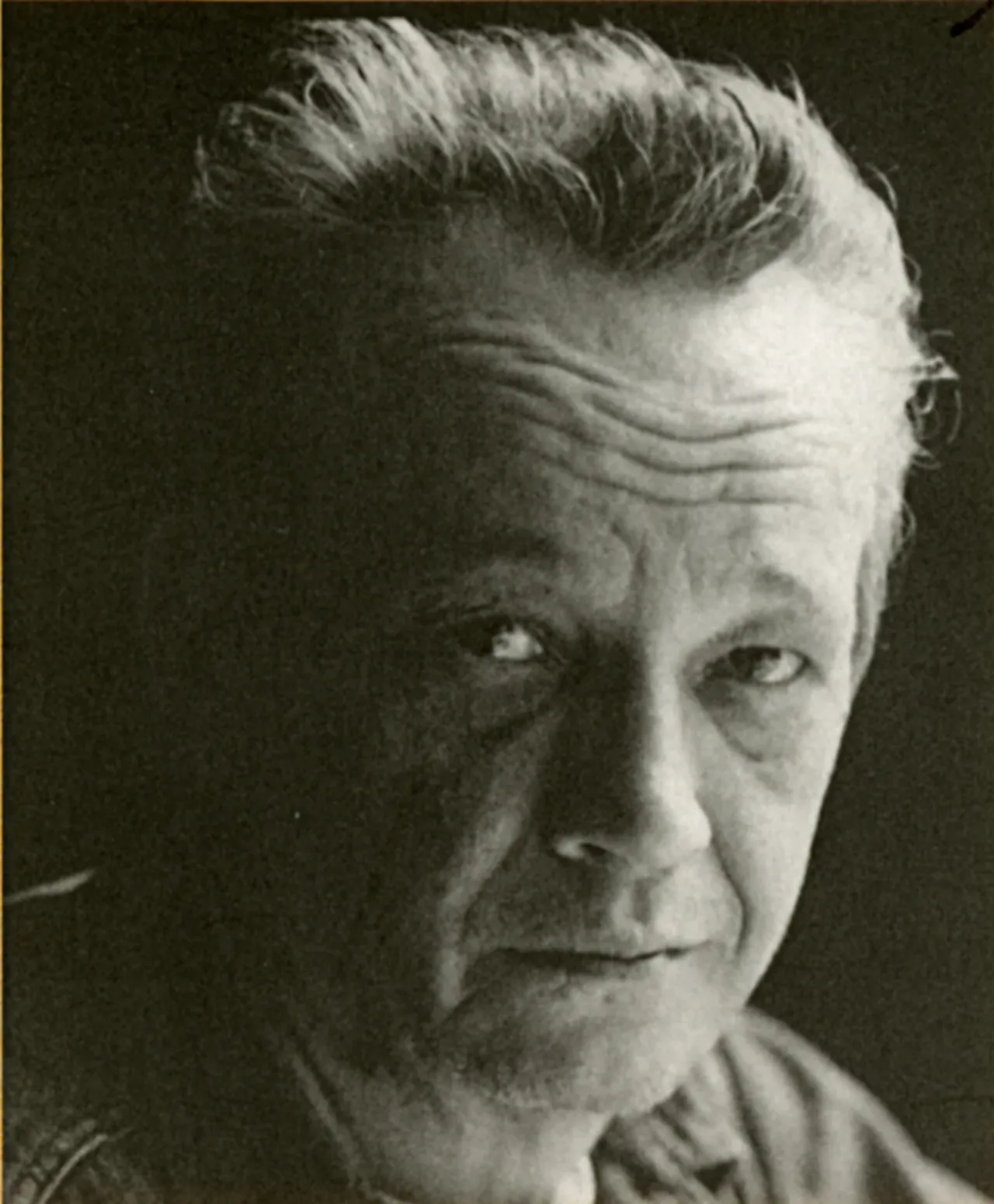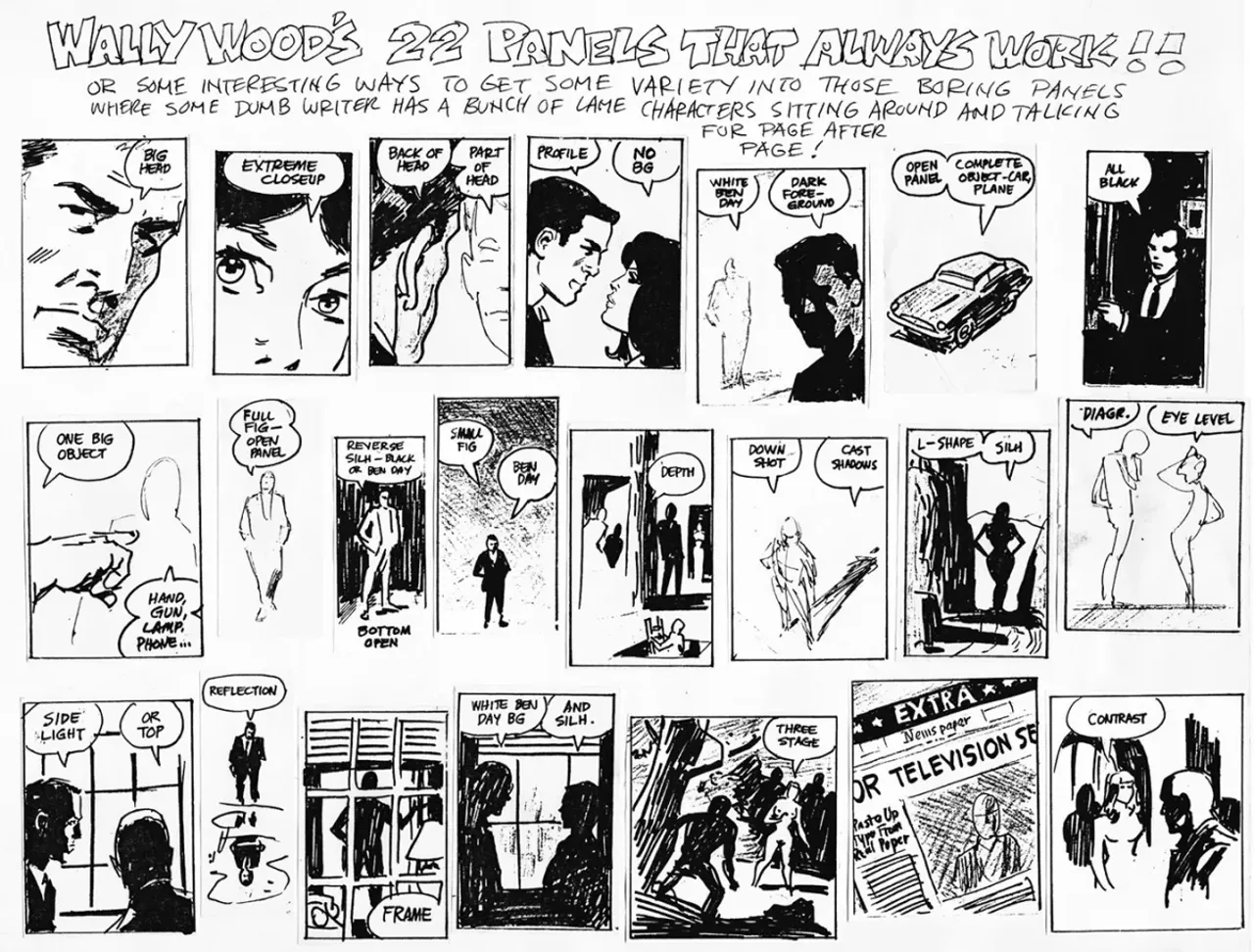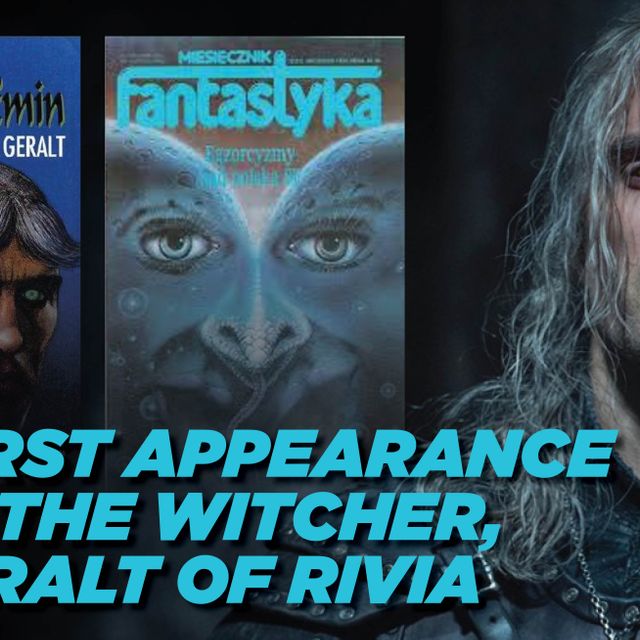One area of focus in comic collecting that has been overlooked since other forms of media began to have such a great influence on the hobby is that of hunting down key comics by top creators. Never fear. We’re here to help you sort through the top books by individual creators, both in terms of investing and reading. This time we’re looking at the works of Wally Wood.
A Most Talented Artist
Wallace “Wally” Wood is considered by many longtime comic fans to be one of the most individually talented artists to work in the medium. His work inspired generations of artists and resonated across decades. From his groundbreaking work for EC to his brief interpretation of Daredevil to his advocacy for creator rights, Wood was a comet blazing across the comic firmament. But he also had his demons and, while they inspired his work, they led to his untimely demise at the age of 54.
Wally Wood was born June 17, 1927 in Menahya, Minnesota. From an early age, Wood was drawing comics, influenced by the great comic strip artists of the day: Milton Caniff, Roy Crane, Will Eisner, Hal Foster, and Alex Raymond. After a turn in the military from 1944 to 1948, he enrolled in a number of art schools, each time dropping out after a semester or two. A chance meeting with John Severin, a fellow artist looking to break into the field, led to Wood getting his first professional job as a background artist and letterer on Will Eisner’s The Spirit comic strip. From there, he found work on Fox’s romance comics, primarily lettering, inking, and providing background art.
First Comic Book Work
Wood’s first credited work was in the pages of Women Outlaws #4, in which he penciled and inked the lead story, “The Tip Off Woman". Published by Fox in January 1949, there are a scant 12 graded copies in the CGC population list. A 5.0 graded copy sold in a February 16 eBay auction for $154. A 9.4 Promise Collection copy sold in a 2021 Heritage auction for the record price of $2,160. This one rarely comes up for sale – once a year on average. So, if you see a copy out there and you’re a Wood collector, you might want to consider purchasing it.
EC Comics
Wood’s work quickly gained the attention of EC publisher Bill Gaines and editor Al Feldstein. Both liked what they saw and hired him to provide artwork for the burgeoning publisher. Much of Wood’s early work at EC was in collaboration with friend Harry Harrison, who he worked with on Fox books, and another friend Joe Orlando. Wood’s first work at EC was providing inks over Harrison’s pencils in a story in A Moon, a Girl…Romance #10, published in late 1949. There are only 15 graded copies, but prices are much higher for this issue than Wood’s first work. The most recent sale was a 7.0 going in an August 2024 Heritage auction for $1,560. The highest price paid occurred in a 2018 Heritage auction in which a 9.0 – the sole top-of-census copy – sold for $4,080.
The first pencils provided by Wood in an EC comic appeared in Modern Love #5, in a story produced in collaboration with Harrison. Again, there are few graded copies – just 14 in the CGC population count and only one in the CBCS census. However, there have been three sales this year ranging from a 6.5 selling for $1,200 to a 4.0 for $456 to a 1.5 for $180. The record setter was an 8.5 going for $4,945 in a March 2024 ComicConnect auction. This one is something of a must-have for die-hard Wood fans, so expect to pay a premium if you’re looking to purchase a copy.
Avon Comics and Others
While he was providing artwork for EC, Wood was also working on stories and covers for Fox and Avon, as well as a handful of other publishers. His output in the early 1950s was voluminous, and he was well known for his late-night artistic binges, ones that often involved the imbibing of copious amounts of alcohol. Among the favorites of his work for Avon one would have to include Strange Worlds #4. Wood provided the cover art, while his interior work on one story was done in cooperation with Joe Orlando. The cover, in particular, is a favorite of Wood fans. There are 104 graded copies. There have been nine sales this year, ranging from a low of $260 for a 1.5 to a high of $5,280 for a White Mountain Pedigree 7.0. The highest price paid was $21,600 for the sole top-of-census 9.0 in a 2023 Heritage auction.
Another of Wood’s early works for Avon was Eerie #2. It’s a prime example of Wood’s work on a horror comic. While he provided interiors for many of EC’s well known horror books, he rarely drew the covers. It's not quite up to par with something like Strange Worlds #4, but it is a nice example of his craftsmanship and attention to detail. Of the 64 graded copies, two have sold this year: a 3.0 for $870 in a March 18 Heritage auction and a 2.0 for $288 in a June 10 Heritage auction. The current record holder is an 8.5 that sold for $3,585 in a 2017 Heritage auction. A 9.0 last sold in 2007 for $1,554, while the lone 9.4 graded copy has never sold. Expect much higher prices to be paid if any of the higher grades are offered up at auction.
A fine example of Wood’s early science fiction art comes courtesy of Captain Science #4, published by Youthful in June 1951. The cover, co-produced by Wood and Orlando, showcases a gnarly green alien, a feature that would become a hallmark of his EC science fiction work, as well as the "Mars Attacks" trading cards from Topps that Wood designed. There are 50 graded copies, of which four have sold this year. Two were in the 8.5 grade and sold in Heritage auctions a month apart – January and February – for $960 and $1,320 respectively. Two 4.5 graded copies also sold, the first in a May 20 eBay auction for $500, the second in a July 8 Heritage auction for $372. The top price paid was $9,600 for a 9.4 in a 2023 Heritage auction.
Science Fiction at EC
Among the most well-known and favored of all of Wood’s comic works are his covers and interiors for EC’s science fiction comics. In fact, Wood was the primary person responsible for convincing Bill Gaines to publish science fiction. Beginning with Weird Science #9 in September 1951, Wood would become the primary cover artist for the series and provide, over the next few years, the artistic works that are his greatest claim to fame. It is also the series where Wood finally broke through as a solo penciller and inker.
You really can’t go wrong with a Wood illustrated Weird Science cover or the stories he drew in its pages. The highest price paid for any single issue was a 9.8 Gaines File Copy of Weird Science #14 that went for $18,000 in a January 12 Heritage auction. Many mid-grade copies from the series start in the $2,000 range and often sell for more. Here are just a few of the many fantastic covers Wood produced for the series:
Mad About Wood
Wally Wood was also a favorite artist for the one EC comic that survived the advent of the Comics Code Authority: Mad. What made him a fan favorite was his ability to draw stories that satirically skewered just about anything and everything. Nowhere is this better exemplified than in the story “Superduperman” in Mad #4.
There are 253 graded copies, of which six have sold this year, ranging from $800 for a 7.5 to $150 for a 3.5. The record holder is a 9.8 Gaines File Copy that sold for $12,000 in a June 2024 Heritage auction.
Daredevil
While Wood stayed on Mad until 1964, his overall comic output decreased dramatically. He had a well-regarded stint inking Jack Kirby on Challengers of the Unknown for DC, and produced what may be the first fully painted comic story – “Hansel and Gretel” in Harvey Kurtzman’s Trump #1, published by Hugh Hefner in 1956. However, Wood loved comics and wanted to do more. So, when Stan Lee approached him about Daredevil, he jumped at the chance.
Wood’s first issue for the series was Daredevil #5 with, what would be considered a rarity in 1964, Wood’s name emblazoned on the cover. However, it’s Daredevil #7 that fans remember most fondly. Featuring DD in his red costume for the first time and duking it out underwater with the Sub-Mariner, it’s an all-time classic Silver Age Marvel cover. There are 2,917 graded copies. Of the 95 copies that have sold this year, the highest was a 9.2 going for $6,799 in a March 2 eBay best offer sale. The record holder is a 9.6 that sold for $36,000 in a 2021 Heritage fixed price sale.
Wood only lasted on the series until Daredevil #11 due to a dispute with Lee over writing credits, a not uncommon occurrence in the 1960s at Marvel, as Jack Kirby and Steve Ditko would easily attest. But Wood wasn’t done yet, not by a long shot.
T.H.U.N.D.E.R. Agents
Wood always sought control over his work. In 1965, Wood signed up with Tower Comics to create and edit an entirely new line of superhero comics. Wood, together with the crew in his studio, and with some help from Reed Crandall and Al Williamson, created the T.H.U.N.D.E.R. Agents. Gil Kane and Steve Ditko also contributed artwork to Tower’s superhero books. Centered around the core three of Dynamo, No-Man, and Menthor, the series was an initial success. There are 152 graded copies of T.H.U.N.D.E.R. Agents #1, and they’re relatively inexpensive when compared with Wood’s earlier works. There have been four sales this year, ranging from $435 for a 9.2 to $165 for an 8.5. The highest price paid was $777 for a 9.6 in a 2012 Heritage auction. It’s definitely worth seeking out a copy if you can as the work is among Wood’s best. It’s also a somewhat overlooked and undervalued Silver Age gem.
Later Work
Unfortunately, Tower Comics had major distribution problems, and folded in 1969. However, as he was working on Tower’s superhero line, Wood was approached by Dan Atkins about contributing artwork for a prozine he was publishing. Wood agreed to, but only on the grounds that he could publish it himself. Atkins, who was a huge admirer of Wood’s work, agreed in exchange for a place in Wood’s studio. Thus was born Witzend. As publisher, Wood was finally fully in control of his work and, for the first time, began using concepts he had created as a child such as the Wizard King and Animan. Regrettably, the series only lasted a dozen issues and folded in 1971. Earning very little money from the work, Wood had long since given up the publishing reins. There are only 14 graded copies of Witzend #1 in the CGC population count. One of two top-of-census 9.4 graded copies sold in a February 3 eBay sale for $400. Mid-grade copies (when they come up for sale, which is rarely) can be had for $100 or less.
Wood returned to Marvel toward the end of the 1960s, most memorably contributing pencils and inks to the Roy Thomas penned Dr. Doom stories beginning in Astonishing Tales #1. It’s definitely worth considering adding at least this first issue to your collection if you’re a Wood fan. While it’s a relatively inexpensive comic, and there are plenty of graded copies with 583 in the CGC census, a couple 9.8 graded copies sold for $4,800 during the comic boom in 2022. No 9.8s have sold since, but I imagine they would be much, much cheaper now.
As was becoming the norm for Wood, however, he only lasted four issues on the series. Alcohol was beginning to take a toll on the artist and his work. More and more, he settled for inking duties on a number of DC and Marvel series, but rarely lasted long.
Final Works
By the end of the 1970s, Wood was a bitter man, consumed by alcohol. He famously said of his career, “If I had it all to do over again, I’d cut off my hands.” While there were the occasional flashes of brilliance, his work had become formulaic as he relied more on the artists in his studio. Wood’s health began to fail after a series of strokes and his kidneys were failing. His two final works were both inking jobs. He inked Jose Delbo’s interior pencils in Wonder Woman #269 and Frank Miller’s cover pencils on Daredevil #164. Sadly, drink and depression became overwhelming demons for Wood, and he shot himself on November 2, 1981.
Legacy
Wally Wood is considered by many to be one of the finest craftsmen the comics world has ever seen. His EC work, particularly the science fiction comics, are masterpieces of the form – both the covers and the interior artwork. Even work that was never published, such as “22 Panels That Work…”
…have been passed between artists for years and are considered something of a master class that shows step-by-step the ways in which an artist can tell a story. Wood was inducted into the Will Eisner Hall of Fame in 1992, and many of his works are lauded as the pinnacle of graphic storytelling. He gave much to the comic book world, but it sadly consumed him as well. One can only imagine the heights to which Wally Wood could have risen in later years had he been able to defeat his demons.
